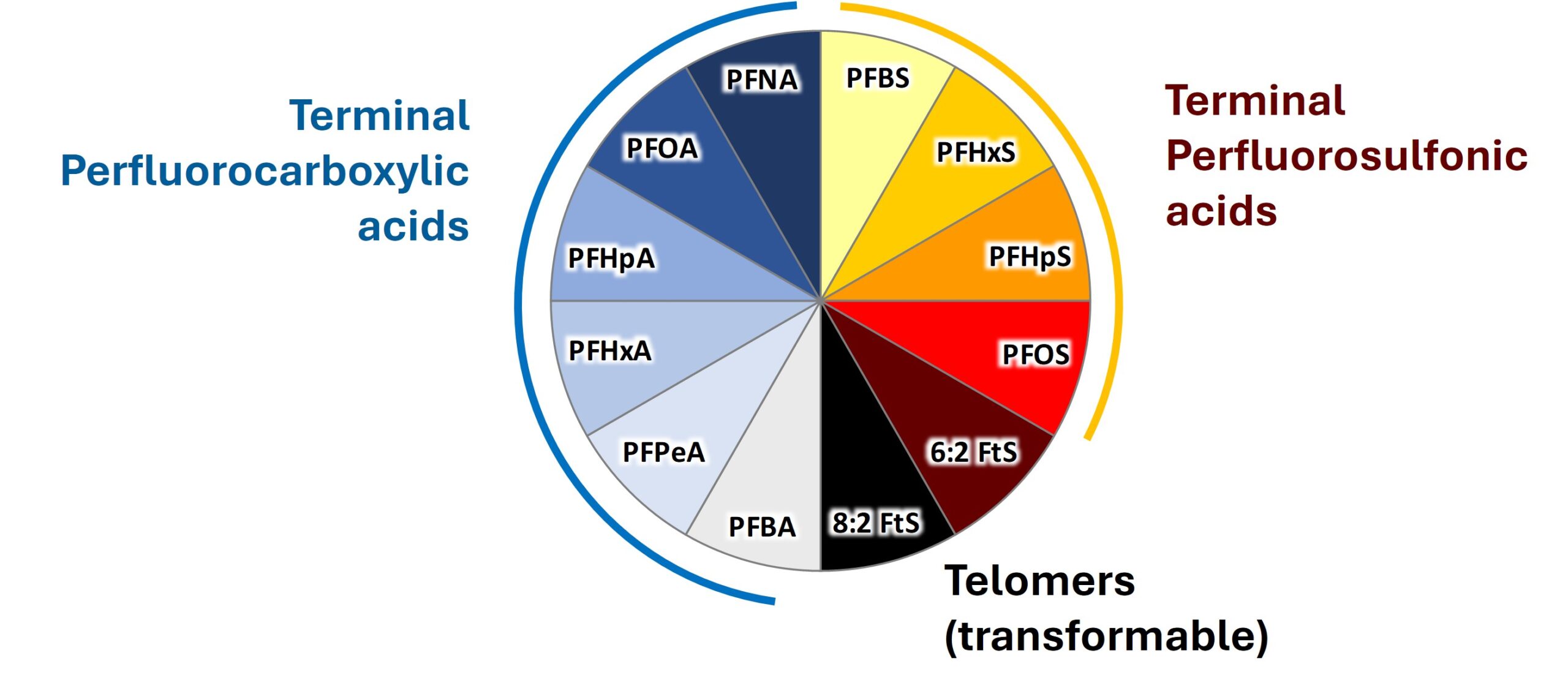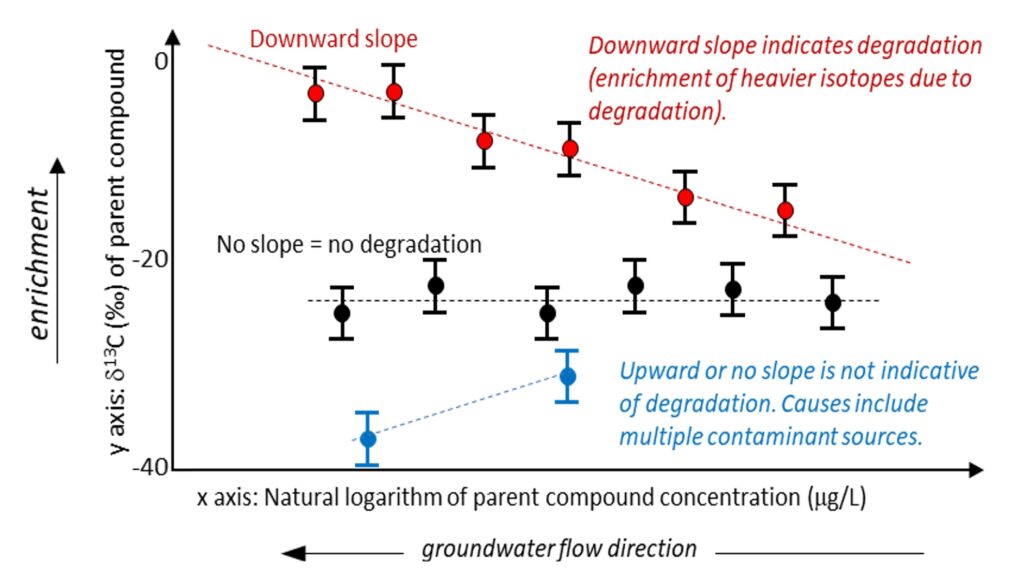Evaluated PCE, TCE, and cis-DCE concentration data via Compound Specific Isotope Analysis (CSIA) to provide additional line of evidence that a groundwater plume is degrading and that the VOCs detected in private wells originate from an upgradient landfill.
The CSIA method was used to analyze carbon (δ¹³C) and chlorine (δ³⁷Cl) isotopes in PCE, TCE, and cis-1,2-dichloroethene (cDCE) from several onsite monitoring and off-site residential wells. The analysis integrated isotopic fractionation patterns, interpreted using Rayleigh graphs and dual isotope plots, to assess degradation processes, groundwater flow direction, comparisons with published isotope ranges for chlorinated solvents to evaluate whether detected contaminants were degraded products or directly released compounds. Based on the analysis, TCE detections in off-site wells were likely associated with on-site contamination. Biodegradation trends were evident in off-site wells, with increasing δ¹³C values for TCE and higher relative cDCE fractions, indicating ongoing degradation. The presence of BTEX compounds and MTBE in one well suggested a localized petroleum hydrocarbon release, which could have enhanced PCE degradation, explaining the absence of PCE but the presence of TCE and cDCE. Cis-1,2-DCE isotopes in off-site wells did not match those in on-site wells, indicating that on-site groundwater was not the primary source of off-site cDCE contamination.
The CSIA analysis helped distinguish between degradation-driven transformations and direct contaminant migration.
The project also involved looking at PFAS chemical signatures, which indicated that off-site detections in wells were attributable, in part, to on-site releases.


